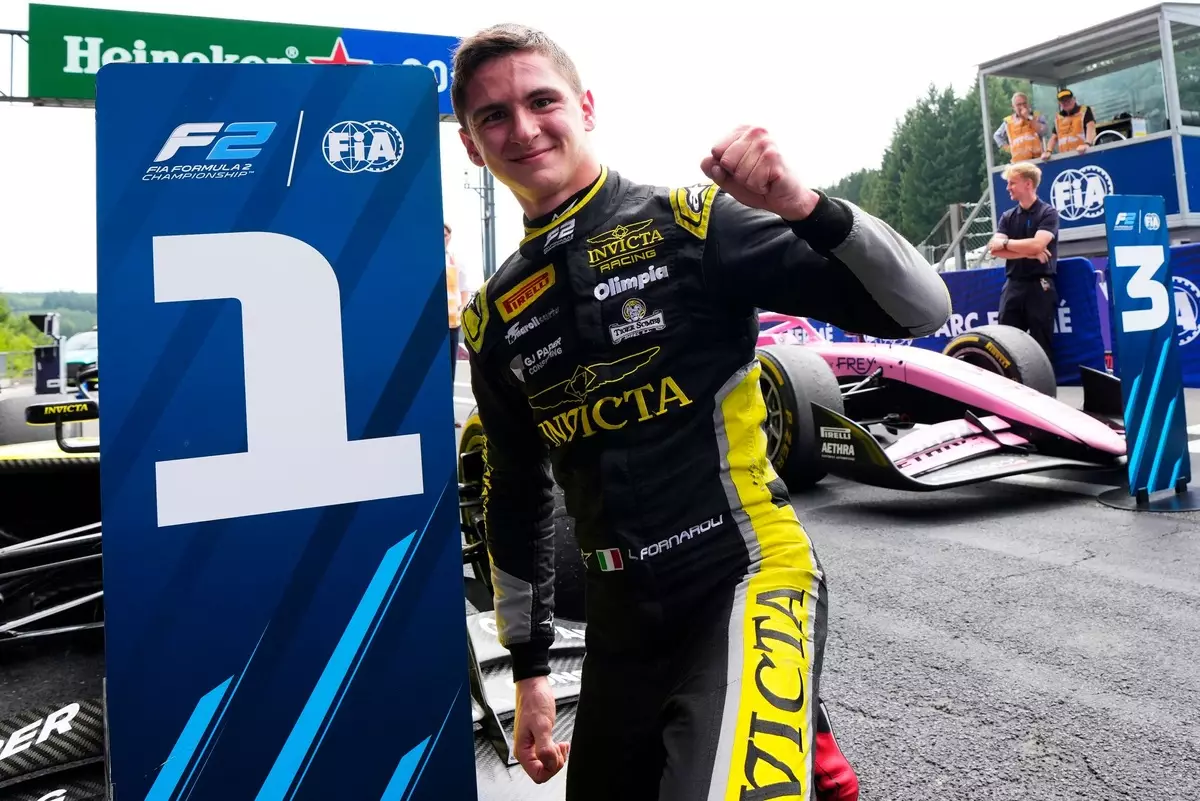In the high-octane world of motorsport, where glamour often eclipses substance, Leonardo Fornaroli emerges as a rare beacon of true racing prowess. Unlike many of his peers who float under the heavy umbrella of established F1 academies, Fornaroli’s current leadership in Formula 2 is strikingly independent of such affiliations. This deviation from the norm raises profound questions about talent identification and the inefficiencies within traditional development pipelines. His journey demonstrates that raw skill and consistency can indeed thrive outside the conventional “network,” challenging the industry’s often myopic focus on pedigree over performance.
The fact that Fornaroli, in his debut top-tier junior season, is leading F2—a series considered a crucial stepping stone to Formula 1—without a formal connection to an F1 team is remarkable. His ascent underscores a broader issue: talent is often overlooked because it doesn’t fit the predefined mold. Robinson’s enthusiasm for Fornaroli as a “Moneyball” candidate further emphasizes that analytical precision and understated ability might hold the key to uncovering hidden gems in the racing universe.
Challenging the Status Quo Through Consistency and Precision
Fornaroli’s path has defied recent trends where championships are often won through aggressive driving or high-profile backing. His victory in last year’s Formula 3 title, achieved without a single race win, exemplifies a different kind of dominance—one rooted in perseverance and strategic consistency. That he followed this unconventional championship with a commanding display in F2 highlights an underestimated trait: mental stability under pressure.
Robinson praises Fornaroli’s capability to “execute” race after race with minimal errors, drawing a stark contrast to more flamboyant drivers who often rely on spectacle rather than substance. This relentless consistency provides invaluable data for Formula 1 teams seeking drivers who can develop and calibrate a race car over long periods, not just produce sporadic flashes of brilliance. His emergence as a race winner—with multiple wins this season—reinforces that subtle skill can surpass showboating and hype, especially when it comes to building a sustainable Formula 1 career.
The Understated Virtuoso: A New Model for Driver Development
Fornaroli’s quiet personality and understated approach might not generate headlines or viral moments, but Robinson argues that these qualities make him uniquely suited for F1’s complex ecosystem. In a sport often distracted by media antics and larger-than-life personalities, Fornaroli’s calm demeanor offers a different kind of value: reliability. Teams are increasingly valuing stability and data-driven insights, which align perfectly with Fornaroli’s strengths.
The “Moneyball” analogy isn’t merely a marketing slogan; it reflects a shift in talent scouting towards meticulous analysis of a driver’s ability to deliver consistent performance. This approach favors drivers who might be overlooked due to their lack of flamboyance but who can, through repetition and patience, enhance a team’s overall development process. Fornaroli’s ability to consistently produce lap times with precision—despite lacking the expansive support networks many of his rivals enjoy—makes him a fertile ground for F1 teams seeking long-term drivers capable of shaping a competitive car.
The Industry’s Blind Spot and the Promise of an Underestimated Talent
The perplexing silence surrounding Fornaroli’s F1 prospects reveals a deeper flaw within motorsport’s talent pipeline. His standout performances have yet to translate into a firm F1 seat, a discrepancy Robinson describes as “mind-blowing.” While many drivers in higher championship positions benefit from well-oiled development programs, Fornaroli’s case exemplifies how raw, unpolished talent can be sidelined by traditional scouting methods that chase after star status or social media momentum.
Robinson’s candid critique raises a crucial point: if teams adopted a more analytical, less biased approach, talents like Fornaroli could be fast-tracked into top-level racing—far sooner than the flawed narrative of popularity and media appeal suggests. His consistency, ability to work within the team, and capacity for technical development make him a prototype of what the future F1 driver might look like—less a showman and more a craftsman.
The Future of Motorsport: Valuing the Understated and the Analytical
Fornaroli embodies a paradigm shift in how talent is perceived and cultivated in motorsport. As teams navigate the delicate balance between raw speed and technical insight, the Italian driver’s profile is a compelling argument for broader, more inclusive scouting strategies. His story suggests that the next great F1 champion could be someone who quietly accumulates victories, refines car performance, and consistently executes under pressure—rather than flashy gestures or social media stardom.
Robinson’s admiration and insights hint at a broader industry awakening. The emphasis should pivot from spectacle to substance, from hype to habit. Fornaroli might be the archetype of the driver who breaks the mold, proving that the most crucial attributes—stability, consistency, execution—are often hidden behind unassuming facades, waiting for the right eye to recognize their true value.
Motorsport’s greatest revolution could well be in embracing these “Moneyball” drivers—those who, through diligent analysis and calm, unwavering performance, are capable of redefining what it means to be elite in racing’s relentless pursuit of perfection.

